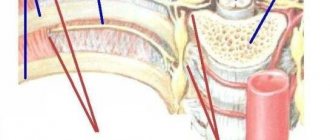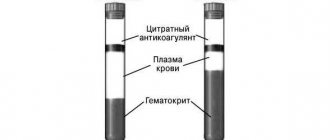15.03.2018
Last modified: December 26, 2021 at 06:27 pm
A person's blood pressure depends on a number of factors and can decrease or increase for various reasons. Determining the normal limit is quite difficult, since optimal indicators depend on age, gender, condition and characteristics of the body. The “gold standard” is considered to be 120 to 80, but they are observed in a small number of people, while others deviate in one direction or another. What does pressure 150 to 70 mean, and does it need to be treated?
Causes of arterial hypertension
It can develop due to a number of prerequisites, which include:
- cardiovascular diseases, kidney pathologies;
- negative environmental influences (atmospheric pressure surges, high temperature and humidity);
- excessive physical or emotional stress;
- chronic fatigue syndrome;
- sleep disorders, insomnia;
- incorrect lifestyle, bad habits;
- unhealthy diet, abuse of caffeine and other stimulants;
- obesity, overweight;
- age-related changes in the body.
The genetic factor plays an important role in the development of hypertension; it is especially often transmitted through the female line, and with a family history, high blood pressure can be observed in young people.
Attention: the diagnosis of “hypertension” is made only by a doctor after collecting the patient’s history and complaints, as well as monitoring pressure indicators over time. You cannot self-diagnose and treat high blood pressure.
Reasons for dissonance of meanings
As a rule, a pressure of 150 over 70 is diagnosed in older people, which is associated with age-related changes that determine an increase in systolic indicator:
Blood pressure 140 over 50 - what does this mean?
- Destruction and thinning of the muscle layer in the vessels lead to a decrease in their elasticity, an increase in diameter, resulting in a disorder in blood pressure regulation.
- The atherosclerotic process contributes to disruption of the contractile activity of arteries due to cholesterol deposits on the internal vascular membranes.
- Deterioration of kidney function affects the mechanisms of blood pressure regulation.
- Destruction of special receptors located in the myocardium, which are responsible for the response of the arteries to changes in systolic pressure. Normally, receptors should detect an increase in values and instruct the vessels to balance them.
- Deterioration of blood supply to the brain, due to which the pressure regulation centers located in it are disrupted.
These features are typical for older people and are the causes of dissonance between the upper and lower indicators.
Important! An increase in the pulse difference can be observed with excessive myocardial activity, when blood is actively pushed into the vessels, which leads to an increase in systolic pressure.
A decrease in diastolic indicator indicates a decrease in the elasticity of the arteries. Its value depends on the functioning of the kidneys, since they produce renin, a hormone that regulates the contractile activity of blood vessels. With low production of the hormone, arterial tone decreases, as a result of which the vessels cannot contract normally.
Factors contributing to an increase in PD:
- stressful situations;
- emotional and mental stress;
- iron deficiency;
- disorder of the thyroid gland.
An increase in PP is also observed during excessive physical activity, sudden changes in ambient temperature, and also during periods of viral diseases.
No ads 2
Symptoms of hypertension
In the first stages, the pathology is often asymptomatic, and a slight increase in pressure can only be determined after measuring blood pressure. Over time, the disease progresses, and in addition to large numbers on the tonometer, a person experiences the following symptoms:
- headaches, dizziness;
- increased anxiety, mood swings;
- noise in ears;
- loss of appetite, nausea;
- “flies” and a veil before the eyes;
- pain in the heart area, rapid pulse (above 150 or more beats per minute);
- dyspnea.
Important information: Pressure surges during menopause: how to treat
As a rule, signs of hypertension are felt especially strongly when there is a significant difference between systolic and diastolic pressure. So, with a reading of 150 over 50, a person will have a stronger headache than with a blood pressure of one hundred thirty over seventy. A difference of 30-50 mmHg is considered normal, and a large gap usually indicates the presence of serious pathologies.
Important: elevated upper pressure and low lower pressure (150 to 60, 150 to 70) may mean that a person has tuberculosis, which is accompanied by dysfunction of the digestive tract and gall bladder. In such a situation, pathologies of the kidneys and cardiovascular system should also be excluded.
Pulse
Many factors influence heart rate:
- Breath.
- Arterial pressure.
- Stress hormone levels.
- State of the cardiac conduction system.
In a healthy person over 20 years old, the pulse is in the range of 60-80 beats per minute. With high blood pressure, an increase in the number of heart contractions is usually observed. However, due to the large number of factors affecting the pulse, it can not only become faster, but also slow down. In this case, do not hesitate and call a doctor.
And also read on our website: What does blood pressure 140 over 100 mean, the reasons, what to do and what to take to bring down high levels?
Heart rate 60 at this blood pressure
Modern electronic blood pressure monitors show heart rate in addition to blood pressure numbers. This is no accident. Pay attention to this indicator and report it to your doctor if it falls outside the range of 60-80 beats per minute or the tonometer detects an arrhythmia.
A pulse of 60 is not pathological. However, it is at the lower limit of normal. This may indicate incipient disturbances in the conduction system of the heart, which requires additional medical examination and a clinical minimum of examinations.
Be aware that such heart rate values can occur while taking beta blockers. In this case, this is a therapeutic effect that does not require correction.
Hypertension in old age
High blood pressure accompanies most people after reaching 60 years of age; indicators can reach 150 mmHg and higher. Such values are considered normal if a person does not experience unpleasant symptoms, but since in old age the risk of complications is much higher, mature people diagnosed with arterial hypertension are usually prescribed appropriate medications. Breathing exercises and light physical activity have a good effect on the body.
Pressure 150 over 70 (150 over 60): normal or pathological?
The optimal pressure is considered to be 120/80, the concept of an individual norm includes indicators from 130/85 to 140/90, but anything that exceeds these numbers is already dangerous for a person due to its destructive consequences.
Blood pressure readings of 150/70 (150/60) are the first stage of hypertension, unless we are talking about a single surge in pressure as a result of stress or physical activity, atmospheric disasters or overeating, or taking certain medications.
Blood pressure is not a constant value: in young people, diastolic pressure increases more often, and the increase in systolic pressure is not related to age. If only the systolic indicator increases, we speak of isolated systolic arterial hypertension (ISAH). Blood pressure 150/70 (150/60) is one of the variants of this disease.
Fluctuations in arterial markers depend on the gender, age, constitution of a person, his habits, and lifestyle.
Almost always, blood pressure is related to heart rate. Analysis of heart rhythm and blood pressure helps doctors identify arterial hypertension and prevent the development of hypertension.
Hypertension during pregnancy
During the period of bearing a child, all processes in a woman’s body are activated, the volume of circulating blood increases, which affects blood pressure values. Most often, during pregnancy it decreases, but sometimes an increase can be observed, which is not accompanied by discomfort.
A slight increase in blood pressure is considered normal, but levels of 150x70 can have serious consequences for the child. In this case, it is better to seek medical help as soon as possible - sometimes hospitalization is required to preserve the health of the mother and fetus of a pregnant woman.
What does it mean
What does an increase in blood pressure (blood pressure) up to 150/80 mm mean? rt. Art. According to accepted standards, this pressure indicator is a symptom of mild hypertension. The upper pressure indicator is 150 mm. rt. Art. exceeds the lower one by 70 mm. rt. Art.
This is quite a big difference, since the maximum permissible difference is 50 mm. rt. Art. This condition is considered in medicine as isolated hypertension, which is much more dangerous than classic hypertension.
Why is hypertension dangerous?
Frequent increases in blood pressure to 140x80 can lead to serious consequences for the body. It leads to wear and tear of blood vessels and heart muscle, as well as impaired circulation in all organs, which causes numerous diseases, primarily pathologies of the kidneys, vision, and excretory system. In severe cases, hypertension leads to stroke (in common parlance, stroke) and heart attack - conditions that threaten not only health, but also human life.
Important information: Can blood pressure rise during menstruation?
Attention: the risk of heart attack and stroke increases significantly when blood pressure levels are above 150, so measures should be taken as soon as possible to reduce the values.
KL 150-60
The main direction in which prefabricated channels KL 150-60 are used is engineering construction, however, the versatility of the design allows these reinforced concrete products to be used also in industrial, energy, civil and residential construction. They are widely used in road and railway construction, where they perform drainage functions to remove excess water from the roadways, railways, pedestrian paths and sidewalks. Also in the channels it is possible to combine the laying of communications for various purposes: process pipelines, drainage or drainage systems, electrical cables, buses, heating mains and many other communications. Prefabricated channels are used for installation both inside and outside buildings.According to the method of laying reinforced concrete heating networks, prefabricated channels KL 150-60 can be underground, semi-underground and above-ground. Aboveground laying of communications is widely used in industrial zones and individual enterprises - channels are placed on overpasses and masts together with industrial steam pipelines and process pipelines, as well as on brackets attached to the walls of buildings. In the construction of heating networks in areas with high groundwater levels, as well as in subsidence soils and permafrost areas, above-ground channel laying has advantages over underground laying. However, when placing communications in areas of existing or future urban development, underground installation of pipelines is usually adopted for architectural reasons.
Reinforced concrete prefabricated channels KL 150-60 are designed for installation in non-subsidence soils, dry and in the presence of groundwater. The depth of the top of the canal ceiling is accepted to be no less than 0.5 (under the road surface) or 0.7 m (in the absence of a road surface) and no more than 2 meters below the ground surface. When laying semi-underground channels, the top of the ceiling is located at a level of 200-400 mm above ground level. The groundwater level is assumed to be at least 1 m below the top of the canal ceiling. If it is impossible to place channels above the groundwater level, an artificial lowering of groundwater should be provided using associated drainage and coating the outer surfaces of the products with bitumen insulation. Canal structures are used in areas with seismicity of no more than 6 points. Prefabricated channels can also be used at high groundwater levels, provided that the products are resistant to floating.
Prefabricated channels KL 150-60 are manufactured in accordance with series 3.006.1-8 “Prefabricated reinforced concrete channels and tunnels from tray elements”, IS-01-04 “Unified prefabricated reinforced concrete channels”, and KhTR1-1 “Precast reinforced concrete elements of channels with a height of 1500 , 1800 and 2100 mm" from heavy concrete with a compressive strength class of at least B15. The frost resistance class of concrete is accepted to be no less than F200 - for the operation of channels in areas characterized by frequent temperature changes (ranging from -50° to +50°). To achieve the necessary and sufficient level of waterproofing of prefabricated units, the water resistance class of concrete is taken from W4 and higher. For additional protection from the effects of water and the active chemical compounds it contains, water-repellent additives are added to concrete products.
Reinforced concrete prefabricated channels KL 150-60 are reinforced with flat welded mesh and volumetric frames. The fittings are made from hot-rolled steel of periodic profile of classes A-I and A-III, and ordinary cold-drawn wire of class B-I. For the manufacture of mounting loops, class A-I steel is used. All fittings and embedded parts for fastening pipelines, cables and other communication units are pre-treated with an anti-corrosion coating.
Channels and prefabricated elements - reinforced concrete channels KL 150-60 - are highly responsible structures, the quality of which determines the reliability and stability of communication networks. Therefore, the standards provide a number of technical requirements for the manufacture and appearance of products. Only small shells with a diameter of up to 18 mm are allowed on the surface of products, no more than one for each linear meter.
Prefabricated channels KL 150-60 must be manufactured exactly with the geometric dimensions specified in the series drawings. Permissible deviations from product dimensions must be no more than ±10 mm in product length, height and cross-sectional width. Curvature of the planes by more than 5 mm over the entire length of the elements is strictly prohibited.
Prefabricated channels KL 150-60 are stored and transported in stacks, the height of which is assumed to be no more than 2 meters. Wooden pads with a thickness of 30 cm are placed under the stacks. Each product is placed on two wooden pads with a thickness of at least 30 mm. Gaskets are installed at the same distances from the ends of the elements as the mounting loops.
You can not only order prefabricated KL 150-60 reinforced concrete channels, but also consult with our specialists and select the required designs of reinforced concrete products. In our sales department you can find out and clarify the price of reinforced concrete prefabricated channels in advance and calculate the total cost of the order. You can buy reinforced concrete channels and consult on general issues of purchase and delivery by calling: St. Petersburg: (812) 309-22-09 , Moscow , Krasnodar . Company operating hours: Mon-Fri from 9-00 to 18-00. carries out delivery of prefabricated reinforced concrete prefabricated channels throughout Russia directly to the customer’s site or to the construction site, if the infrastructure allows.
For questions regarding the installation of reinforced concrete prefabricated channels and channel elements, please contact us by phone.
First aid
If the pressure is 150 to 70, it is best to go to a medical facility (especially if your health deteriorates significantly), but if this is impossible for some reason, you need to provide the person with first aid at home. The best option is to take a quick-acting antihypertensive drug - Andipal, Raunatin, Captopril. Do not forget that only adults can drink them if there are no contraindications after consulting a doctor. If you don’t have such medications at hand, Corvalol, Valocordin or any sedative will do - they slightly reduce blood pressure.
A common way to normalize blood pressure at home is regular cold water. You can dip your hands and feet in it up to the ankle level for 2-4 minutes, put a clean cloth moistened with cold water on the solar plexus area, or simply wash your face. Doctors argue about whether cold water can be used for high blood pressure, so it is necessary to monitor your well-being during procedures. If this option is not suitable, you can take a warm shower.
Important: you should lower your blood pressure at home carefully – a sharp drop is no less dangerous than an increase.
Prevention
Currently, special attention is paid to the prevention of hypertension. It has been noted that its development at a later age carries significantly fewer complications, and the disease itself is easier. The key element of prevention is lifestyle correction, which includes:
- increased physical activity;
- quitting smoking and alcohol;
- weight loss;
- correction of dyslipidemia.
And also read on our website: Is blood pressure 130 over 70 normal, what does it mean and what to do with it?
To increase physical activity, it is not necessary to sign up for a gym; it is enough to give up the elevator and park your car so that you can walk 200-300 meters.
In your diet, avoid fatty meats, pork and lamb. Prefer beef and dietary poultry. Be sure to make one day a week fish.
To correct severe dyslipidemia, it may be necessary to take medications. Discuss this with your healthcare provider.
If you already suffer from hypertension, it is important to strictly adhere to the prescribed treatment plan, and all of the above measures will help, over time, reduce the number of medications you take.
Treatment of hypertension
Therapy for this pathology is prescribed by a doctor and may consist of a number of drugs - alpha and beta blockers, diuretics and sedatives, calcium channel blockers and antitensive receptors. In addition, patients need to follow simple rules that will enhance the effect of medications and reduce the risk of complications:
- normalize your lifestyle, adhere to a daily routine;
- have a good rest;
- to refuse from bad habits;
- engage in light physical activity, spend more time in the fresh air;
- reduce the consumption of salt and sugar, as well as fatty and fried foods;
- include fresh vegetables and fruits in your diet (beets, pomegranates, and grapefruits are especially useful);
- exclude alcohol, coffee, sweet carbonated drinks, replacing them with herbal infusions of motherwort, chamomile, valerian, lemon balm.
It is strictly not recommended to treat hypertension on your own, as this will aggravate the patient’s condition and lead to dire consequences. An increase in pressure up to 150 over 70 can be a symptom of serious diseases and disorders in the body. To avoid unpleasant consequences, it is recommended to consult a doctor as soon as possible, strictly adhere to medical recommendations and lead a healthy lifestyle.
Treatment
If you first discover that you have high blood pressure, beware of taking medications without a doctor’s prescription. However, patients suffering from arterial hypertension for a long time should be able to independently cope with increased blood pressure, of course, if this is not a hypertensive crisis.
Discuss with your doctor what medications you can take; you may need to adjust your basic therapy if your blood pressure still remains high.
Drugs
As we have already said, there are basic therapy and emergency drugs. The first include the following groups of drugs:
- ACE inhibitors;
- angiotensin receptor antagonists;
- calcium channel blockers;
- beta blockers;
- diuretics.
The main therapy is prescribed by the doctor. It is possible to use one drug or a combination of several. Everything will depend on the results of your examination.
Compliance with all recommendations and rules of therapy is the key to successful treatment! Do not skip or stop taking medications on your own!
In conditions of hypertensive crisis, some drugs from the above groups are used. The most commonly used methods to quickly lower blood pressure are:
- Captopril.
- Furosemide.
- Nifedipine.
- Moxonidine.
Each drug has its own contraindications! Only a doctor can prescribe you a drug to urgently lower blood pressure.
Folk recipes
Traditional medicine recipes have absorbed the wisdom of their ancestors. They spent centuries observing the effects of different products on our bodies before determining their range of use. Some recipes remain relevant today.
Before using traditional medicine, consult your doctor!
Avoid recipes containing alcohol. This is due to the fact that its effect first causes relaxation of blood vessels and a decrease in pressure levels, and then vascular spasm occurs, which can lead to a hypertensive crisis.
And also read on our website: What does blood pressure 170 to 120 mean, causes and symptoms, what to do and how to reduce high levels?
Aronia jam with honey
For 1 kg of fresh chokeberries you will need 1 kg of sugar. Sprinkle them with sugar and leave for 24 hours. Then put on fire and let simmer for about 1 hour. Add 500 ml of honey and boil for another 30-40 minutes. Let the jam cool and place in clean, sterile jars. Cover tightly and place in a cool, dark place.
Use 1 teaspoon 3 times a day after meals for 2-3 months. Take a break for 3-4 months, after which, if necessary, repeat the course.
Tea made from hawthorn berries and flowers
You will need 20 g of hawthorn flowers and fruits. Pour 500 ml of boiling water and let it brew for 20-30 minutes, then strain.
Drink 100-150 ml 30 minutes before meals 3 times a day for four weeks. Be sure to take a break for 2-3 months, after which the course can be repeated. This drink can be mixed with lightly brewed black tea.
Infusion of chamomile, motherwort and St. John's wort
Take 20 g of chamomile flowers, 2 teaspoons of grated motherwort root, 15 g of St. John's wort leaves. Mix everything, put it in a thermos, pour 1 liter of boiling water. Let it brew for 3-4 hours, then strain the infusion.
Use 150-200 ml 3 times a day after meals for 2 months. Then take a break for 3 months. If necessary, the course can be repeated.
Causes
The development of persistent arterial hypertension is most often caused by several provoking factors. In most cases, the reasons are:
Normal blood pressure during pregnancy
- predisposition at the gene level;
- errors in nutrition - abuse of fatty and sweet foods;
- overweight, obesity;
- kidney diseases complicated by generalized edema;
- diabetes;
- pathologies of the heart and vascular system;
- severe pregnancy;
- the use of oral contraceptives, drugs with a hypertensive effect;
- salt abuse;
- smoking, alcohol abuse;
- frequent stress, chronic fatigue.
In the overwhelming majority of diagnosed clinical cases, an increase in blood pressure to 150/80 is due to age-related changes occurring in the body. Why does this happen, what is the provoking factor? Against the background of the natural process of wear and tear of blood vessels, damage to their walls, a decrease in elasticity, and an increase in peripheral vascular resistance are noted.
The reason for the increase in blood pressure is also a change in the functioning of the renin-angiotensin-aldosterone system. It is she who is responsible for maintaining the physiological level of blood pressure. Kidney disease, accompanied by fluid retention in the body, can provoke a persistent increase in blood pressure.
The next harmful factor is the formation of cholesterol plaques on the walls of vascular beds. In some cases, an increase in blood pressure to 150 to 80 occurs due to excess dosages of drugs with a hypertensive effect.











